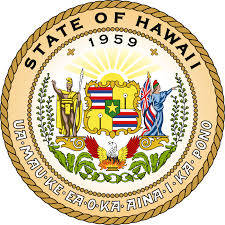The state Public Utilities Commission approved Wednesday regulatory changes for Hawaiian Electric aimed at incentivizing the quick adoption of clean energy goals and could lower customers’ energy bills.
The new regulatory framework — the second phase of a broader regulatory change that began in 2019 — includes a number of changes to Hawaiian Electric’s rate-setting metrics, which the PUC says will reduce electricity rates for customers.
According to a statement by the PUC, the new framework will transition Hawaiian Electric from a system wherein energy rates are determined by the cost of providing service to a new system in which the company is rewarded for providing “exemplary performance.”
Along with reducing costs for customers, the PUC stated that the new framework will also better align Hawaiian Electric with the state’s legally mandated goal of shifting to 100% clean energy by 2045.
Effectively, the new framework — called a Performance-Based Regulatory framework, or PBR framework — would, in part, institute financial controls for Hawaiian Electric in an effort to rein in ever-ballooning energy costs. At the same time, Hawaiian Electric would receive financial incentives for reaching certain performance metrics, and penalties for failing to reach them.
Longtime industry watcher Marco Mangelsdorf, owner of Hilo solar company ProVision Solar, said the new framework is “very bold and ambitious” and upends what has been the predominant energy regulatory strategy for decades.
“PBR is really new stuff,” Mangelsdorf said. “There’s been pockets of adoption here and there, but it’s not very widespread, so there’s not really a lot of data on how it will work in the real world. It’s very cutting-edge.”
Mangelsdorf said the PUC appears to be “keenly aware” of how unsustainable the current trajectory of increasing electric rates under the previous model is, but added that stabilizing, let alone reducing, those rates is effectively impossible without substantial cost controls.
In particular, Mangelsdorf said the balance between incentivizing and penalizing Hawaiian Electric will be a delicate one to maintain.
“No company wants to be penalized, but penalties have to have teeth, otherwise, why would they pay attention to them at all?” Mangelsdorf said. “So they’ve got to hit that balance, with sharp enough penalties without spooking the investor class. … You can’t spook the money people.”
While average Hawaiian Electric customers might expect rates to fall in the future, based on the new framework, Mangelsdorf said he expects the process will be slow and will only reveal its success or failure after years.
Clean energy advocacy nonprofit Blue Planet Foundation applauded the PUC’s announcement with a statement Wednesday, saying Hawaii is now “at the leading edge for realigning the electric utility business with a 100% clean energy future.”
“As we work collectively to rebuild from the COVID-19 pandemic while also urgently rising to meet the challenge of climate change, the commission … is signaling that the time to re-imagine the future is now,” said Melissa Miyashiro, Blue Planet’s managing strategy director, in a statement. “It provides assurance that we won’t be going back to business as usual and we can further accelerate Hawaii’s march toward a carbon-free future.”
A spokesperson for Hawaiian Electric declined to comment Wednesday, saying the company requires more time to review the changes before commenting about them.
Email Michael Brestovansky at mbrestovansky@hawaiitribune-herald.com.









